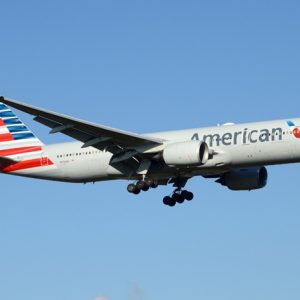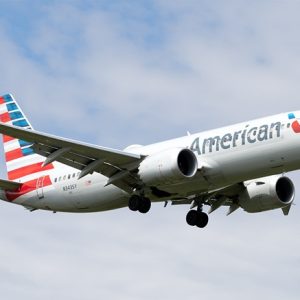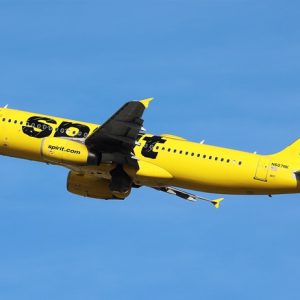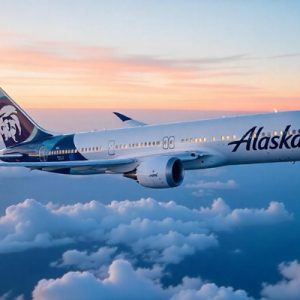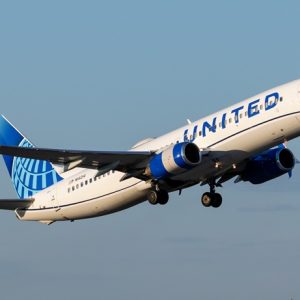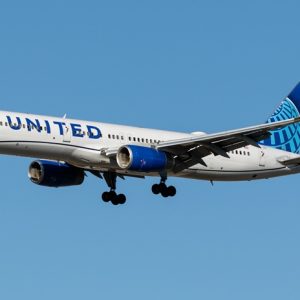
Travel costs aren’t isolated in a world where prices continue to rise. A report by Nerdwallet outlined that consumers could be paying up to 1% more for travel than at the same time last year.
It is a challenging time for airlines and passengers
Travel expenses, including airplane tickets, hotels, car hire, and more, have been analyzed and show a 1% increase compared to the same time last year. While it is no surprise that some costs have increased, many have also dropped, making the modest 1% increase lower than the overall inflation rate.
Key related travel expenses have had price fluctuations, sitting below the general inflation of 2.8% seen on general consumer goods in the last 12 months. The hangover from the COVID-19 pandemic can still be felt.
However, the costs of travel are not significantly lower than in that period, a drop of 23.4% compared to 2023. As a comparison, travel prices are around 13% higher than in the pre-pandemic.
Comparing the data from Nerdwallet:
While airlines are now offering lower flight prices, the ancillary revenue has increased, and a checked bag or seat selection is costing more, contributing to higher out-of-pocket expenses for travelers.
The world’s largest low-cost carrier, Southwest Airlines, recently made headlines with its decision to discontinue its free checked bag service from May 28. This resulted from the airline looking to align itself with broader industry practices and increase revenue streams.
Southwest’s decision to introduce checked bag fees will increase ancillary revenue, help offset operational costs, and allow the carrier to continue offering competitive airfares. While the fee details for checked bags remain unclear, the move represents a significant change in Southwest’s customer service approach.
Factors at play that can increase airfares
Several factors can contribute to increasing travel prices, and for airlines, these can be the price of fuel, operational costs, supply, and demand. Let’s break it down:
Fuel costs:
Jet fuel remains one of an airline’s most significant expenses. Fuel prices continually fluctuate, which is often passed onto the consumer, who, in return, pays a higher airfare.
Supply and demand:
During peak travel times (such as Christmas, Thanksgiving, and even the summer holidays), demand for travel increases. This is a standard time when airfare costs surge. While it is not intentional for an airline to increase travel costs over this period, more people want to travel.
Conversely, suppose an airline is reducing capacity on select routes, with the same number of people searching and booking travel for these dates and destinations. In that case, seat prices will be higher.
Operational costs:
Another significant cost for airlines is paying employees. The cost of labor remains one of the largest expenses for airlines. Combined with aircraft maintenance, airport fees, and other regulatory expenses, this all contributes to the algorithm that sets airline pricing.
Inflation:
Economic inflation affects the airline industry, whether political or simply supply and demand. The airline industry is not isolated from inflation, from wages to airplane parts.
Ancillary fees:
Airfares can fluctuate, up or down, but airlines now rely on extra fees collected when a passenger adds a checked bag, orders food onboard, or even wants to pay extra for preferred seating. This additional revenue passengers add during the booking process boosts the airline’s bottom line.
Airline consolidation:
Two airlines merging to become one (or similar) means reduced competition at select airports and routes. As a result, you may see higher ticket prices due to reduced competition and fewer choices for travelers.
Geopolitical events:
The wars in Ukraine and Gaza, trade restrictions, and political instability can disrupt the global supply chain, fuel supply chain, and can alter airline routing (such as avoiding Russian airspace), which can add to extra costs for airlines. Whether increasing tariffs on imported goods or new air routes, such events can lead to costlier airfares for the consumer.
Air Traffic Congestion and Environmental Regulations:
Increasing air traffic will result in higher airport and airspace congestion fees. Paired with stricter emissions policies, the airline may need to charge additional costs within the base airfare.
Airfares are cheaper than this time last year
Looking back 12 months, the consumer today is getting plane tickets for less than they were in 2024. Airfares have dropped 0.7% year over year and are down almost 10% compared to a decade ago. However, as already noted, the devil is in the details, meaning customers pay more in ancillary fees.
Airlines today rely more on ancillary revenue, so if you are a traveler who is comfortable with the bare minimum (carry-on only, opting not to purchase food onboard, and no desire to pre-select your favorite seat), then the world is your oyster. However, those who like the extras in life will be paying more than ever before.
Factors contributing to the drop in overall airfares are due to changes in post-pandemic market adjustments. During the pandemic, the world witnessed a surge in revenue travel, which drove prices up to high demand.
This has now normalized, leading to more balanced prices. Pair that with increased competition from budget and low-cost airlines, which have put downward pressure on global ticket prices.
Jet fuel, one of an airline’s most significant costs, has stabilized. When combined with technological advancements, such as more fuel-efficient aircraft, airlines can now offer lower base airfares while remaining profitable.
When bundling your airfare with ancillary costs makes the ticket feel more expensive
Airlines continue to ‘unbundle’ airfares, leading to lower base ticket prices while adding extra fees for services that may have once been included. Such as:
- Baggage fees
- Seat selection
- Priority boarding
- Lounge memberships
- Onboard meals
- Onboard Wi-Fi
- Onboard entertainment
- Priority baggage
- Change fees
- Fare types
Some places are cheaper to travel than others
While domestic flights may be more expensive, international airfares spiral downward. According to the online travel marketplace Hopper, international airfares are down compared to last year, and the most economical places to travel are South America, Asia, and Oceania.
This is a vast difference from the Caribbean and Mexico, which have increased by up to 10%.
If you’re willing to avoid tourist hotspots like London or Paris, you would be better off with evolving destinations such as Portugal or Eastern Europe, which continue to be some of the most economical destinations for intrepid travelers.
In New Zealand, domestic airfares remain up to 12% higher than this time last year. A way to circumnavigate the increased cost is for passengers to book their tickets early, make the most of promo or lead-in airfares, and avoid traveling around peak times.
Traveling can be expensive, but several strategies can be followed to cut costs and make the most of your money significantly. Follow some of the steps below:
- Be flexible with travel dates and destinations; airfares and hotel prices will fluctuate depending on demand
- Chose the off-season or travel-week
- Book travel by using fare comparison tools
- Use travel credits or travel rewards
- Book in advance
- Travel with the bare minimum to avoid extra airline fees
- Use public transport
Making the most of the cheapest time and place to travel will depend on how far in advance you can book or research destinations known for being budget-friendly. Southeast Asia, for example, is known for being incredibly affordable for travelers.
Tourists flock to Thailand, Vietnam, Cambodia, and Indonesia for the unique culture, inexpensive accommodations, street food, among other activities. Affordable accommodation and costs while in the destination can help offset the cost of your airfare for traveling abroad.
Eastern Europe is another inexpensive region for travelers. It has a rich culture and history without the high street prices seen in Western Europe.
Hungary, Poland, the Czech Republic, and Romania are known for low-cost accommodation, food, and attractions, with cheap public transport and free walking tours.
Eastern Europe also has many direct flights added seasonally from major US airports.
Central and South America are likely the cheapest spots to visit if you’re looking to travel closer to the US. Nicaragua is one of Central America’s most affordable destinations, and Colombia offers inexpensive food and budget accommodation.
